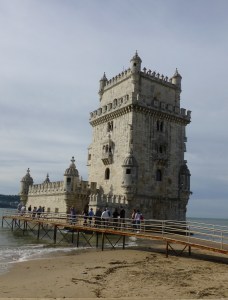Today is a great day. We have a really enjoyable activity and we manage to find a good meal at a time when we are actually hungry.
Before we left for Spain, I booked tickets at the Real Escuela Andaluza del Arte Ecuestre or Royal Andalusian School for Equestrian Art. We get to see a show, “The Dancing Horses of Andalusia” and tour the grounds.
The grounds are lovely with a palace that houses a museum, stables, training area, a saddlery and the show ring.

On the grounds they have an enclosure for Przewalski’s horses. Przewalski’s horses are the only existing wild horses and are native to the Mongolian steppes. The horses that exist are all from 9 horses that were in captivity in 1945. They were reintroduced into the wild in their native habitat and there are now about 300 in the wild and a total population of about 1500.

From there we walk over to the saddlery and watch craft people work the saddles and harnesses by hand.

We also take a couple of “we were here” pictures. As you can see it is still wet out. It was pouring earlier in the morning but has improved since then.


Then we are treated to a training session. The horse is put through its paces. There are lots of dressage steps. The rider does not appear to be doing much but a shift in weight or a slight change of her hands and the horse responds.


In the exhibition ring we are not allowed to take any pictures after the horses arrive. We understand but it would have been fabulous to have some of this incredible show recorded. We see all the different steps the horses can do with a rider on them. We see the horses (without riders) rear, rear and step, and rear and them kick out their back legs. We see a whole carriage exhibition with carriages with one, three and four horses. The complexity of controlling all these horses seems immense. The driver has all these reins and must, when making turns, have the outside horses go faster and the inside horses slow down. We really enjoy the show.


Later we decide that what would be best for us is to eat a late lunch and skip dinner. Eating at 9 PM or later is just not for us. We locate an Italian restaurant that appears to be open until 4PM and walk the mile to the restaurant through the pouring rain (again!) We are rewarded with salad! and pasta! We are so happy to eat fairly plain food in a relaxed situation at a reasonable time. This an altogether good day despite the rain.































































































